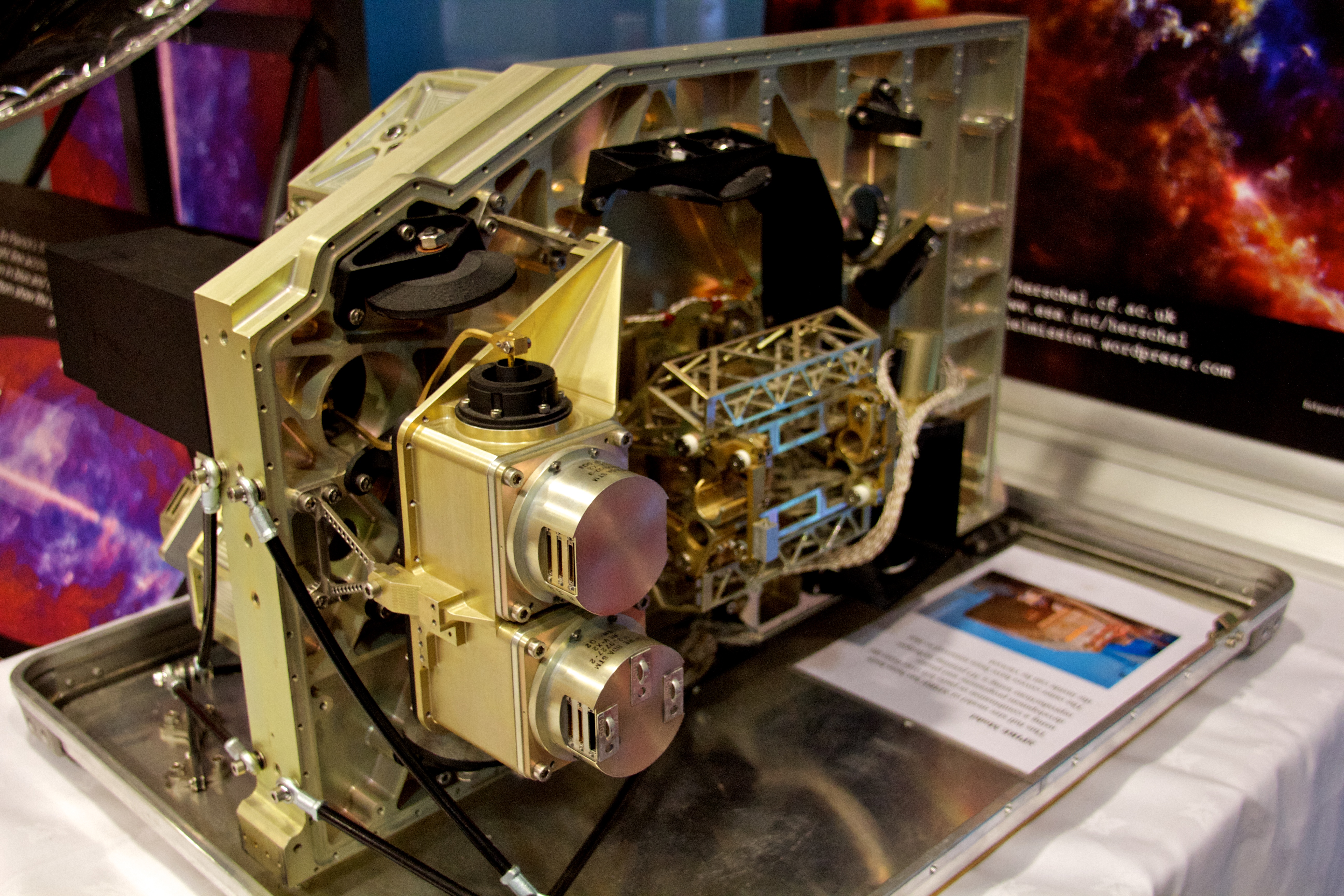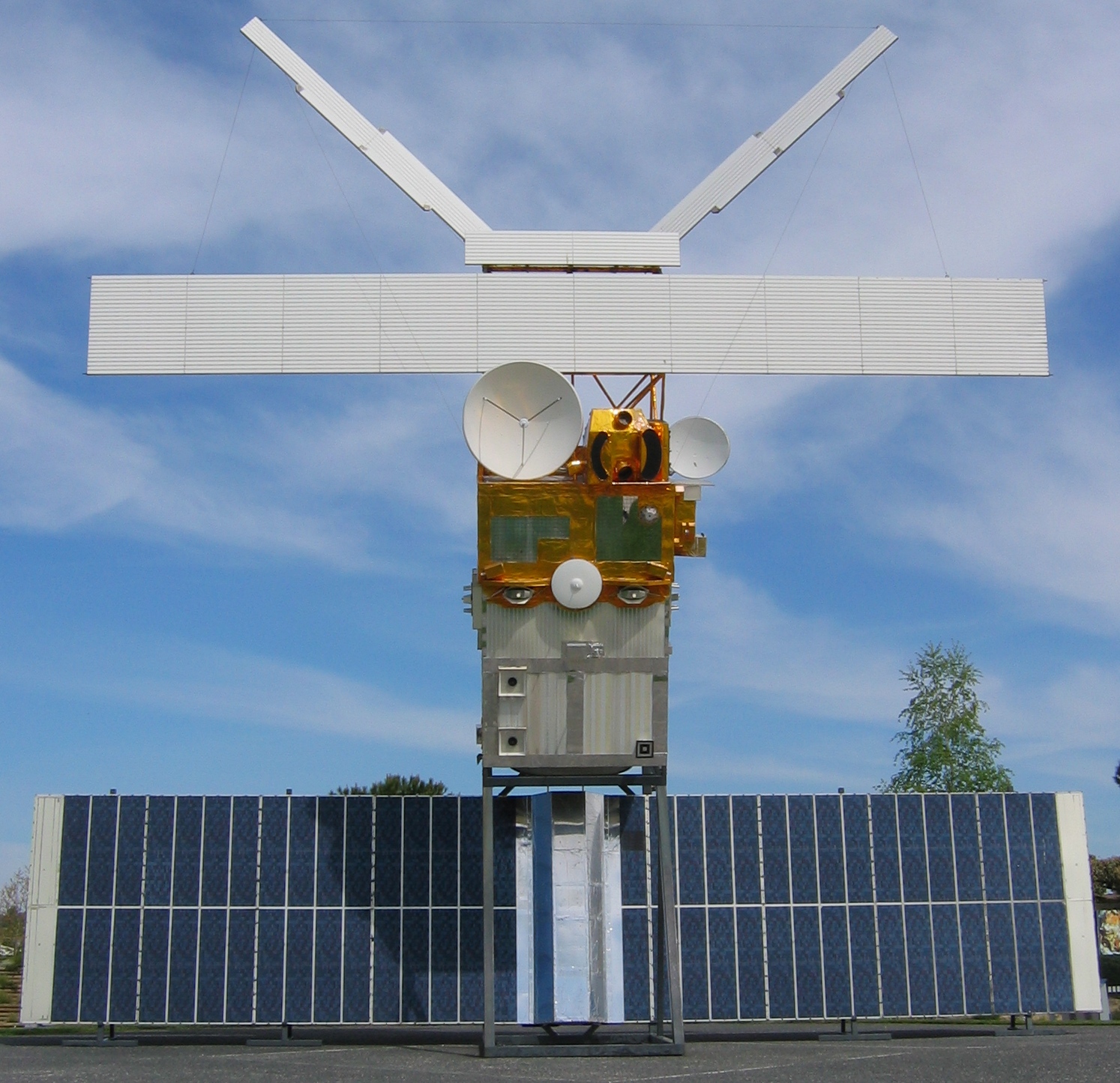|
Netherlands Institute For Space Research
SRON Netherlands Institute for Space Research is the Dutch expertise institute for space research. The Institute develops and uses innovative technology for research in space, focusing on astrophysical research, Earth science and planetary research. SRON has a line of research into new and more sensitive sensors for X-rays and infrared radiation. SRON was founded in 1983 under the name ''Stichting Ruimteonderzoek Nederland'' or ''Space Research Organisation, Netherlands''. SRON is a member institution of the Dutch Research Council (NWO). The Institute is headquartered in Leiden with additional facilities in the city of Groningen. Science and technology The institute has over 250 staff members who are employed in a support department and five divisions: High-Energy Astrophysics (HEA), Low-Energy Astrophysics (LEA), Earth and Planetary Science (EPS), Sensor Research and Technology (SR&T) and Engineering Division (ED). Technology SRON's ambition is to act as a leading institute i ... [...More Info...] [...Related Items...] OR: [Wikipedia] [Google] [Baidu] |
Leiden
Leiden (; in English and archaic Dutch also Leyden) is a city and municipality in the province of South Holland, Netherlands. The municipality of Leiden has a population of 119,713, but the city forms one densely connected agglomeration with its suburbs Oegstgeest, Leiderdorp, Voorschoten and Zoeterwoude with 206,647 inhabitants. The Netherlands Central Bureau of Statistics (CBS) further includes Katwijk in the agglomeration which makes the total population of the Leiden urban agglomeration 270,879, and in the larger Leiden urban area also Teylingen, Noordwijk, and Noordwijkerhout are included with in total 348,868 inhabitants. Leiden is located on the Oude Rijn, at a distance of some from The Hague to its south and some from Amsterdam to its north. The recreational area of the Kaag Lakes (Kagerplassen) lies just to the northeast of Leiden. A university city since 1575, Leiden has been one of Europe's most prominent scientific centres for more than four centuries. Leide ... [...More Info...] [...Related Items...] OR: [Wikipedia] [Google] [Baidu] |
GUSTO (telescope)
The GUSTO (Galactic / Extragalactic ULDB Spectroscopic Terahertz Observatory) mission is a high-altitude balloon mission that carry an infrared telescope to measure fine-structure line emission from the interstellar medium. The mission was developed by NASA's Explorers Program, and was launched in December 2023 from Antarctica. Overview GUSTO will provide the first complete study of the life cycle of the interstellar medium, the gas and dust from which all stars and planets are formed. The mission is a Mission of Opportunity (MO) of NASA's Explorer's Program [...More Info...] [...Related Items...] OR: [Wikipedia] [Google] [Baidu] |
Envisat
Envisat ("Environmental Satellite") is a large inactive Earth-observing satellite which is still in orbit and now considered space debris. Operated by the European Space Agency (ESA), it was the world's largest civilian Earth observation satellite. It was launched on 1 March 2002 aboard an Ariane 5 from the Guyana Space Centre in Kourou, French Guiana, into a Sun synchronous polar orbit at an altitude of 790 ± 10 km. It orbits the Earth in about 101 minutes, with a repeat cycle of 35 days. After losing contact with the satellite on 8 April 2012, ESA formally announced the end of Envisat's mission on 9 May 2012. Envisat cost 2.3 billion Euro (including 300 million Euro for 5 years of operations) to develop and launch. The mission has been replaced by the Sentinel series of satellites. The first of these, Sentinel 1, has taken over the radar duties of Envisat since its launch in 2014. Mission Envisat was launched as an Earth observation satellite. Its objective ... [...More Info...] [...Related Items...] OR: [Wikipedia] [Google] [Baidu] |
Herschel Space Observatory
The Herschel Space Observatory was a space observatory built and operated by the European Space Agency (ESA). It was active from 2009 to 2013, and was the largest infrared telescope ever launched until the launch of the James Webb Space Telescope in 2021. Herschel carries a mirror and instruments sensitive to the far infrared and submillimetre wavebands (55–672 µm). Herschel was the fourth and final cornerstone mission in the Horizon 2000 programme, following ''SOHO''/'' Cluster II'', ''XMM-Newton'' and ''Rosetta''. The observatory was carried into orbit by an Ariane 5 in May 2009, reaching the second Lagrangian point (L2) of the Earth–Sun system, from Earth, about two months later. Herschel is named after Sir William Herschel, the discoverer of the infrared spectrum and planet Uranus, and his sister and collaborator Caroline Herschel. The observatory was capable of seeing the coldest and dustiest objects in space; for example, cool cocoons where stars form and ... [...More Info...] [...Related Items...] OR: [Wikipedia] [Google] [Baidu] |
European Remote-Sensing Satellite
European Remote Sensing satellite (ERS) was the European Space Agency's first Earth-observing satellite programme using a polar orbit. It consisted of 2 satellites, ERS-1 and ERS-2. ERS-1 ERS-1 launched 17 July 1991 from Guiana Space Centre aboard an Ariane 4 rocket. The satellite was put into a Sun-synchronous polar orbit at an altitude of 782–785 km. ERS-1 failed on 10 March 2000 after nine years in orbit. Instruments ERS-1 carried an array of Earth-observation instruments that gathered information about the Earth (land, water, ice and atmosphere) using a variety of measurement principles. These included: * RA (Radar Altimeter) is a single frequency nadir-pointing radar altimeter operating in the Ku band. * ATSR-1 ( Along-Track Scanning Radiometer) is a 4 channel infrared radiometer and microwave sounder for measuring temperatures at the sea-surface and the top of clouds. * SAR ( synthetic-aperture radar) operating in C band can detect changes in surface heigh ... [...More Info...] [...Related Items...] OR: [Wikipedia] [Google] [Baidu] |
Gravity Field And Steady-State Ocean Circulation Explorer
The Gravity Field and Steady-State Ocean Circulation Explorer (GOCE) was the first of ESA's Living Planet Programme satellites intended to map in unprecedented detail the Earth's gravity field. The spacecraft's primary instrumentation was a highly sensitive gravity gradiometer consisting of three pairs of accelerometers which measured gravitational gradients along three orthogonal axes. Launched on 17 March 2009, GOCE mapped the deep structure of the Earth's mantle and probed hazardous volcanic regions. It brought new insight into ocean behaviour; this in particular, was a major driver for the mission. By combining the gravity data with information about sea surface height gathered by other satellite altimeters, scientists were able to track the direction and speed of geostrophic ocean currents. The low orbit and high accuracy of the system greatly improved the known accuracy and spatial resolution of the geoid (the theoretical surface of equal gravitational potential on the E ... [...More Info...] [...Related Items...] OR: [Wikipedia] [Google] [Baidu] |
Astronomical Netherlands Satellite
The Astronomical Netherlands Satellite (ANS; also known as Astronomische Nederlandse Satelliet) was a space-based X-ray and ultraviolet telescope. It was launched into Earth orbit on 30 August 1974 at 14:07:39 UTC in a Scout rocket from Vandenberg Air Force Base, United States. The mission ran for 20 months until June 1976, and was jointly funded by the Netherlands Institute for Space Research (NIVR) and NASA. ANS was the first Dutch satellite, and the Main Belt asteroid 9996 ANS was named after it. ANS reentered Earth's atmosphere on June 14, 1977. The telescope had an initial orbit with a periapsis of , an apoapsis of , with inclination 98.0° and eccentricity 0.064048, giving it a period of 99.2 minutes. The orbit was sun-synchronous, and the attitude of the spacecraft could be controlled through reaction wheels. The momentum stored in the reaction wheels throughout the orbit was regularly dumped via magnetic coils that interacted with the Earth's magnetic field. T ... [...More Info...] [...Related Items...] OR: [Wikipedia] [Google] [Baidu] |
Infrared Space Observatory
The Infrared Space Observatory (ISO) was a space telescope for infrared light designed and operated by the European Space Agency (ESA), in cooperation with ISAS (now part of JAXA) and NASA. The ISO was designed to study infrared light at wavelengths of 2.5 to 240 micrometres and operated from 1995 to 1998. The €480.1-million satellite was launched on 17 November 1995 from the ELA-2 launch pad at the Guiana Space Centre near Kourou in French Guiana. The launch vehicle, an Ariane 44P rocket, placed ISO successfully into a highly elliptical geocentric orbit, completing one revolution around the Earth every 24 hours. The primary mirror of its Ritchey-Chrétien telescope measured 60 cm in diameter and was cooled to 1.7 kelvins by means of superfluid helium. The ISO satellite contained four instruments that allowed for imaging and photometry from 2.5 to 240 micrometres and spectroscopy from 2.5 to 196.8 micrometers. ESA and the Infrared Processing and Analysis Center made effor ... [...More Info...] [...Related Items...] OR: [Wikipedia] [Google] [Baidu] |
IRAS
The Infrared Astronomical Satellite (Dutch: ''Infrarood Astronomische Satelliet'') (IRAS) was the first space telescope to perform a survey of the entire night sky at infrared wavelengths. Launched on 25 January 1983, its mission lasted ten months. The telescope was a joint project of the United States (NASA), the Netherlands ( NIVR), and the United Kingdom ( SERC). Over 250,000 infrared sources were observed at 12, 25, 60, and 100 micrometer wavelengths. Support for the processing and analysis of data from IRAS was contributed from the Infrared Processing and Analysis Center at the California Institute of Technology. Currently, the Infrared Science Archive at IPAC holds the IRAS archive. The success of IRAS led to interest in the 1985 Infrared Telescope (IRT) mission on the Space Shuttle, and the planned Shuttle Infrared Telescope Facility which eventually transformed into the Space Infrared Telescope Facility, SIRTF, which in turn was developed into the Spitzer Space ... [...More Info...] [...Related Items...] OR: [Wikipedia] [Google] [Baidu] |
Hitomi (satellite)
, also known as ASTRO-H and New X-ray Telescope (NeXT), was an X-ray astronomy satellite commissioned by the Japan Aerospace Exploration Agency (JAXA) for studying extremely energetic processes in the Universe. The space observatory was designed to extend the research conducted by the Advanced Satellite for Cosmology and Astrophysics (ASCA) by investigating the hard X-ray band above 10 Electronvolt, keV. The satellite was originally called New X-ray Telescope; at the time of launch it was called ASTRO-H. After it was placed in orbit and its Solar panels on spacecraft, solar panels deployed, it was renamed ''Hitomi''. The spacecraft was launched on 17 February 2016 and contact was lost on 26 March 2016, due to multiple incidents with the attitude control system leading to an uncontrolled spin rate and breakup of structurally weak elements. Name The new name refers to the Pupil, pupil of an eye, and to a legend of a painting of four dragons. The word Hitomi generally means "eye ... [...More Info...] [...Related Items...] OR: [Wikipedia] [Google] [Baidu] |
Compton Gamma Ray Observatory
The Compton Gamma Ray Observatory (CGRO) was a space observatory detecting photons with energies from 20 k eV to 30 GeV, in Earth orbit from 1991 to 2000. The observatory featured four main telescopes in one spacecraft, covering X-rays and gamma rays, including various specialized sub-instruments and detectors. Following 14 years of effort, the observatory was launched from Space Shuttle ''Atlantis'' during STS-37 on April 5, 1991, and operated until its deorbit on June 4, 2000. It was deployed in low Earth orbit at to avoid the Van Allen radiation belt. It was the heaviest astrophysical payload ever flown at that time at . Costing $617 million, the CGRO was part of NASA's " Great Observatories" series, along with the Hubble Space Telescope, the Chandra X-ray Observatory, and the Spitzer Space Telescope. It was the second of the series to be launched into space, following the Hubble Space Telescope. The CGRO was named after Arthur Compton, an American physicis ... [...More Info...] [...Related Items...] OR: [Wikipedia] [Google] [Baidu] |






_(2).jpg)


